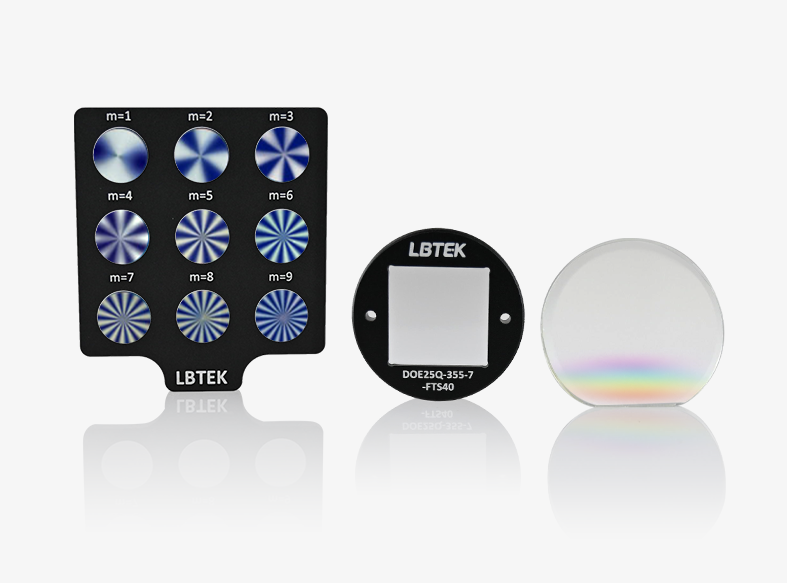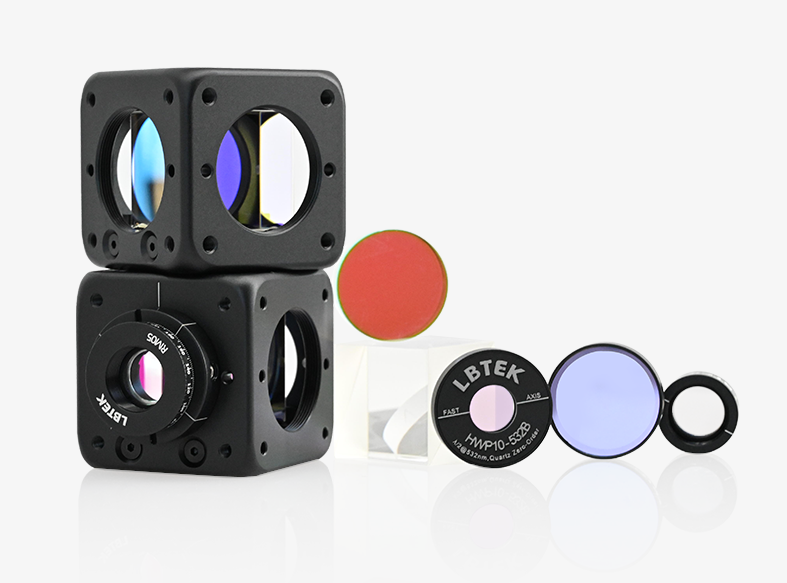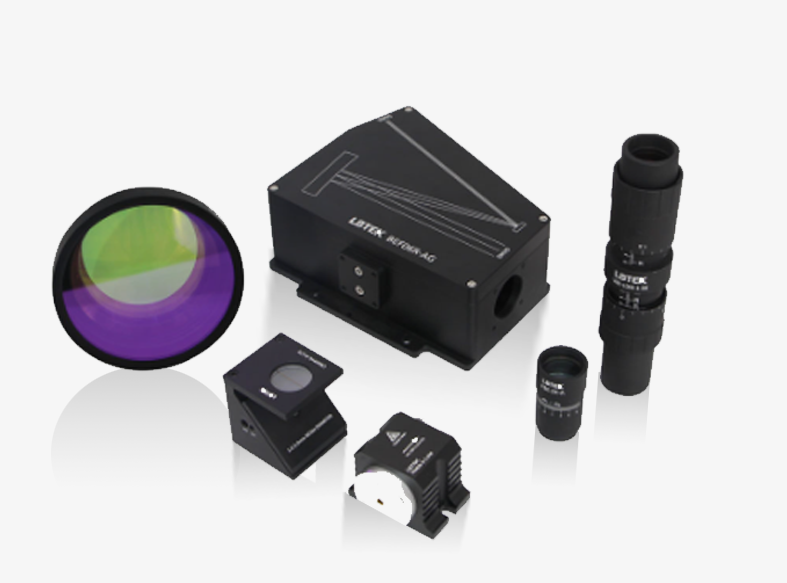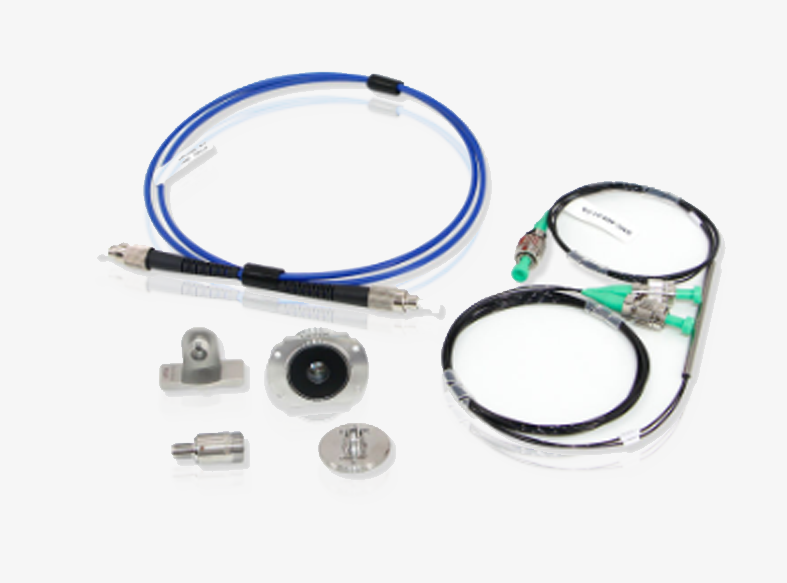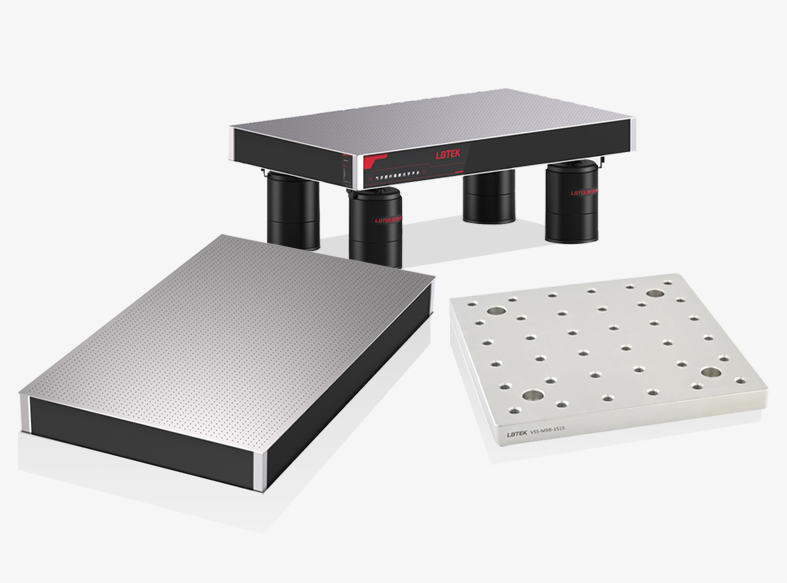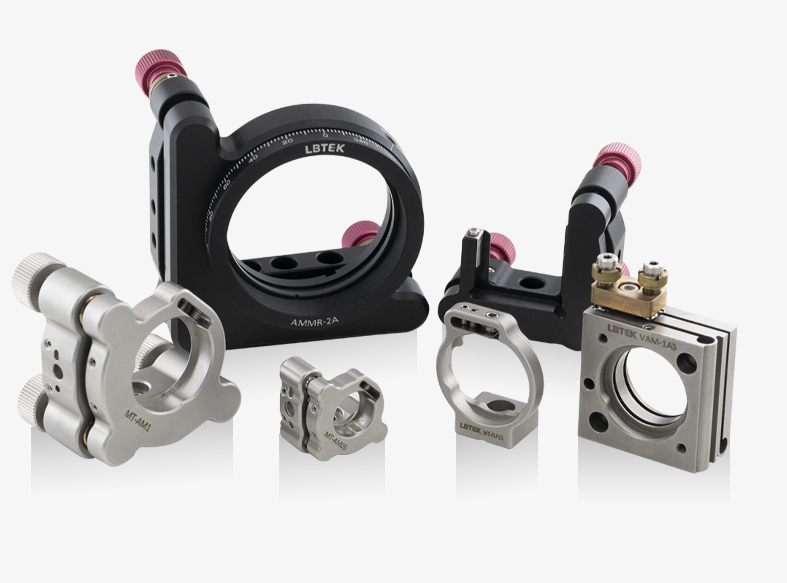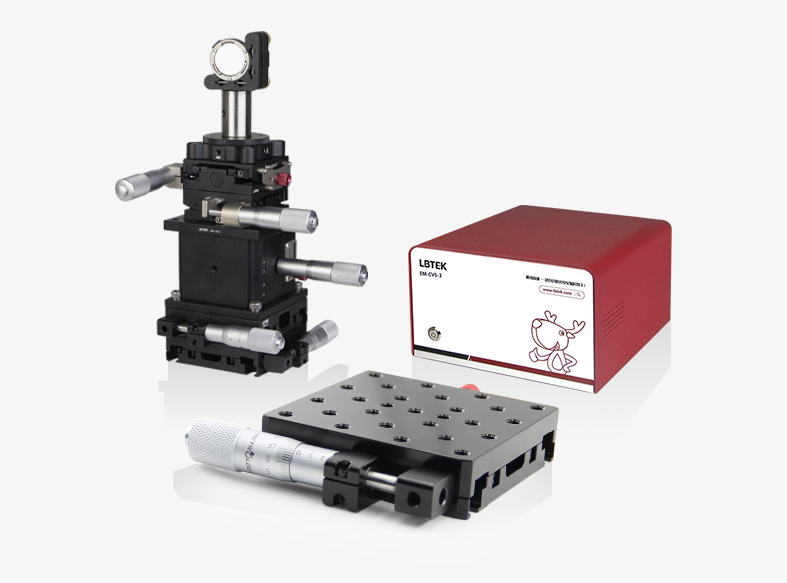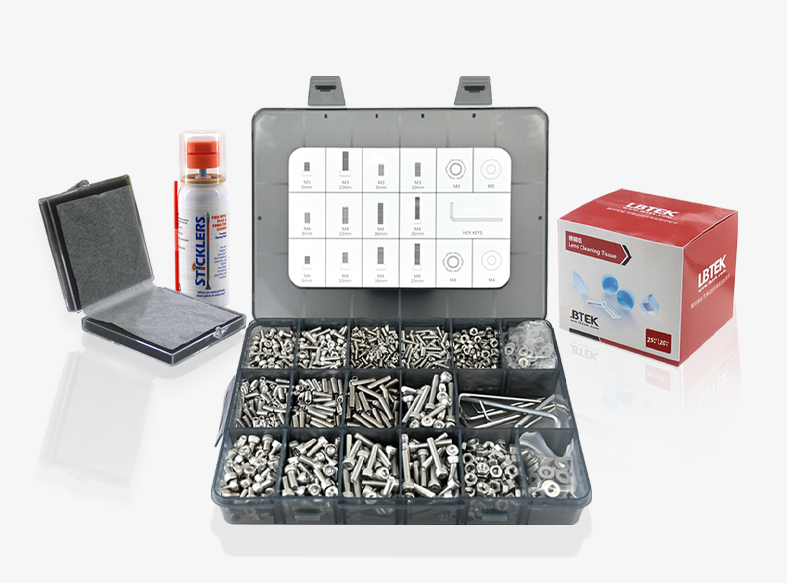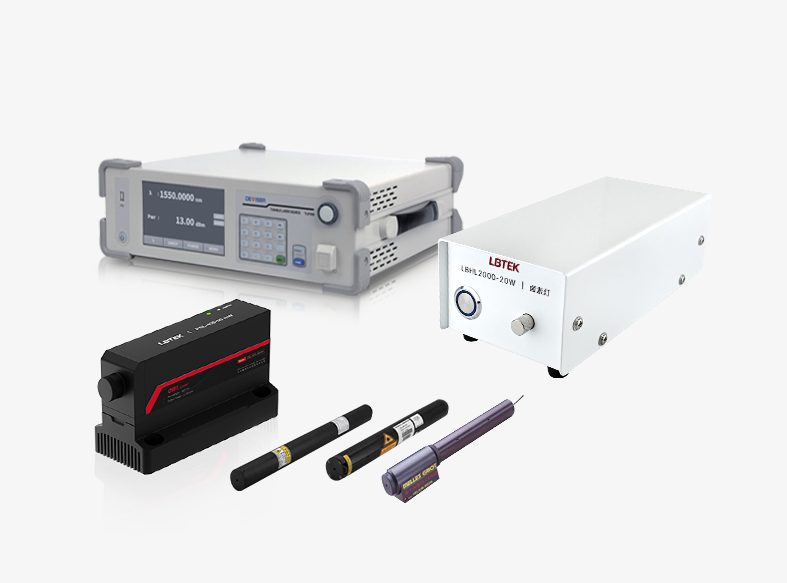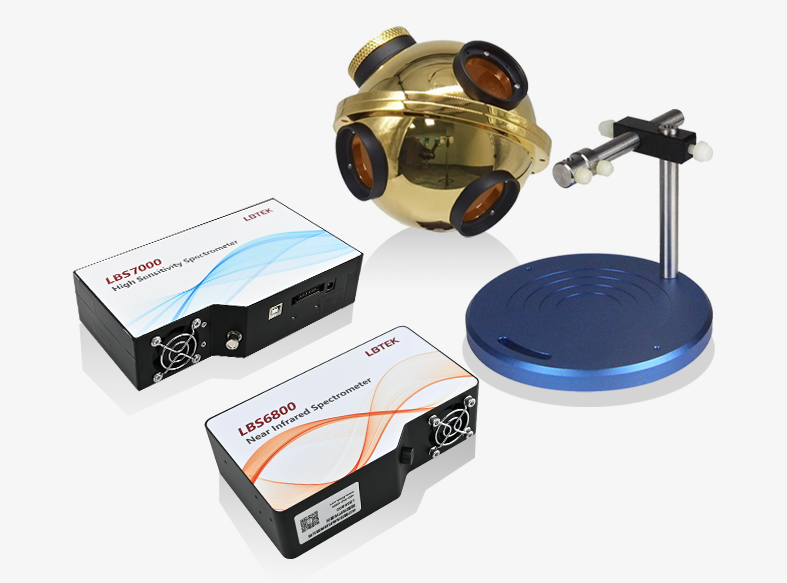- Optical material: UV fused silica
- Operating wavelength: 200 nm-2.1 μm (uncoated)
- Application: imaging, beam expansion or reduction, convergence

- Substrate material: UV fused silica
- Operating wavelength: 200 nm-2.1 μm (uncoated)
- Application: imaging, beam expansion or reduction, convergence
The LBTEK Double-Convex Lenses have a negative focal length and are commonly used in applications such as imaging or beam collimation. UV-grade fused silica exhibits high transmittance in the deep ultraviolet range and produces almost no laser-induced fluorescence, making it suitable for applications spanning from ultraviolet to near-infrared band. All circular lenses from LBTEK are pre-installed with standard lens tubes or lens mounting adapters. These mechanical components are engraved with the product model, type, diameter, and focal length for easy identification of lens parameters.
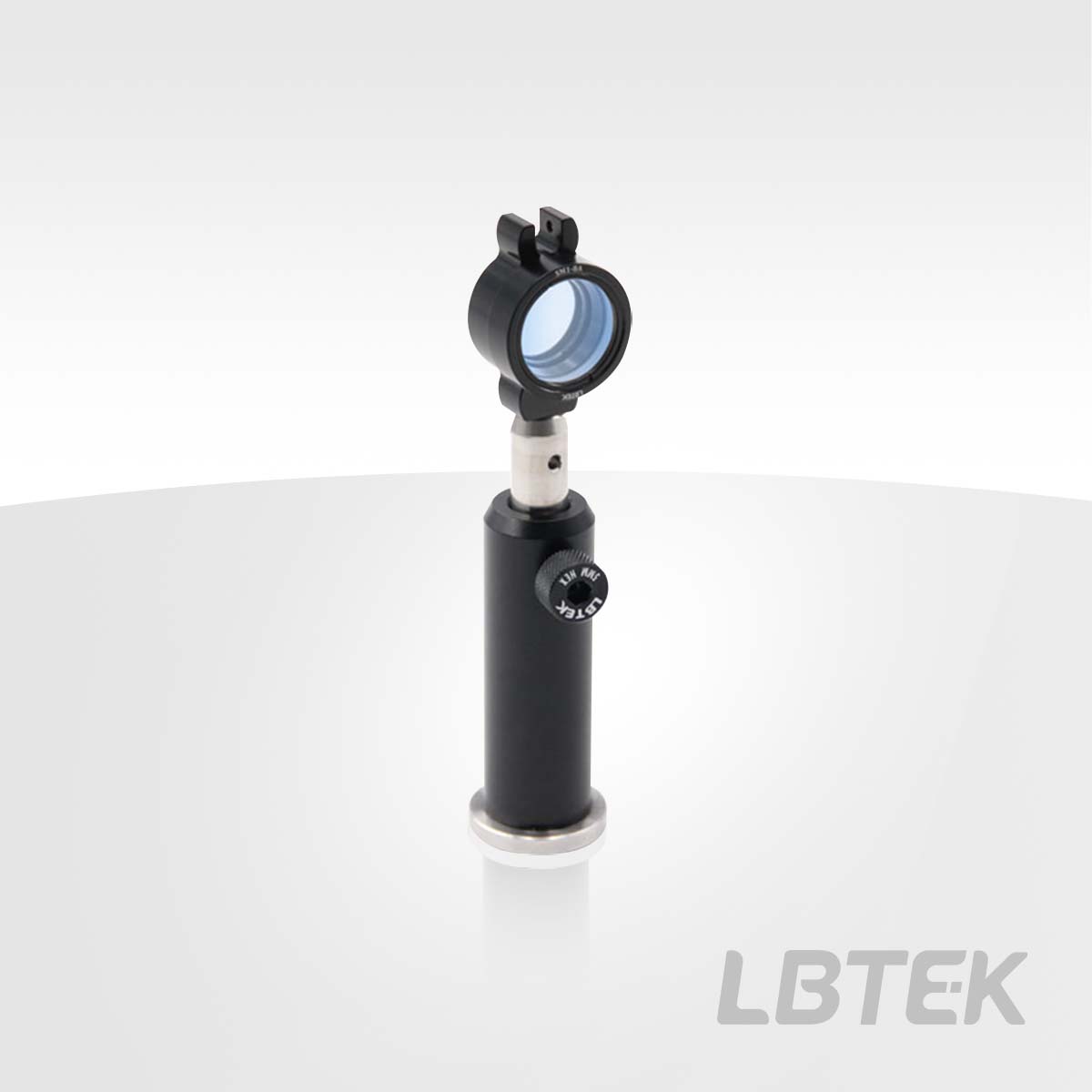
The housing surface of the LBTEK Lens is engraved with the product model and other information
Product Model | Diameter | Focal length | Unit Price | Compare | Lead Time | ||
|---|---|---|---|---|---|---|---|
| MBCX20613 | 25.4 mm | 50.0 mm | $106.95 | today |

- Substrate material: UV fused silica
- Operating wavelength: 200 nm-2.1 μm (uncoated)
- Application: imaging, beam expansion or reduction, convergence
The LBTEK Double-Convex Lenses have a negative focal length and are commonly used in applications such as imaging or beam collimation. UV-grade fused silica exhibits high transmittance in the deep ultraviolet range and produces almost no laser-induced fluorescence, making it suitable for applications spanning from ultraviolet to near-infrared band. All circular lenses from LBTEK can be mounted in LBTEK standard lens tubes, fixed lens mounts, and various coaxial mounting plates. Customers can choose the optimal mounting solution for different application scenarios.
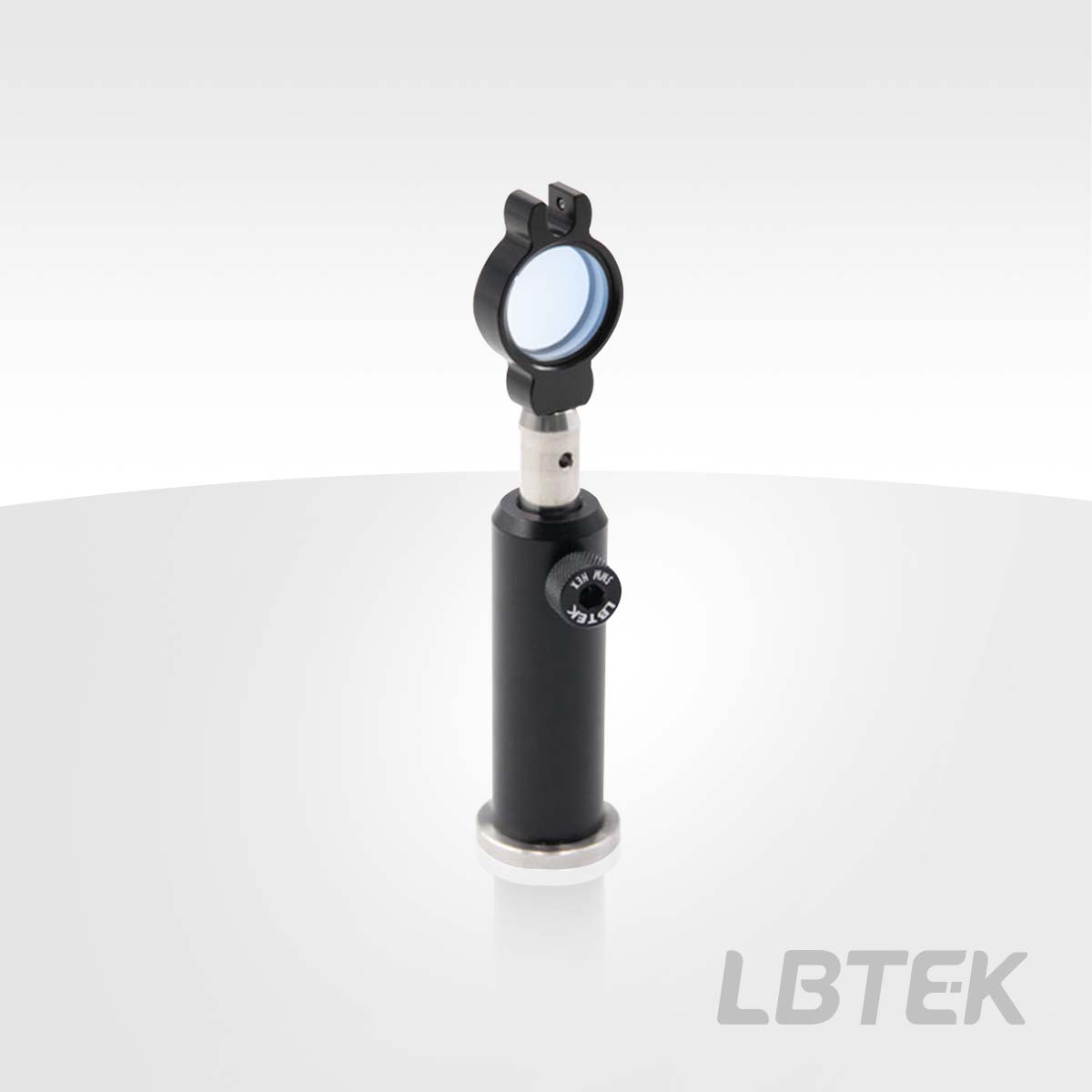
The LBTEK Unmounted Lenses are suitable for building compact systems
Product Model | Diameter | Focal length | Unit Price | Compare | Lead Time | ||
|---|---|---|---|---|---|---|---|
| BCX20613 | 25.4 mm | 50.0 mm | $95.96 | today |
